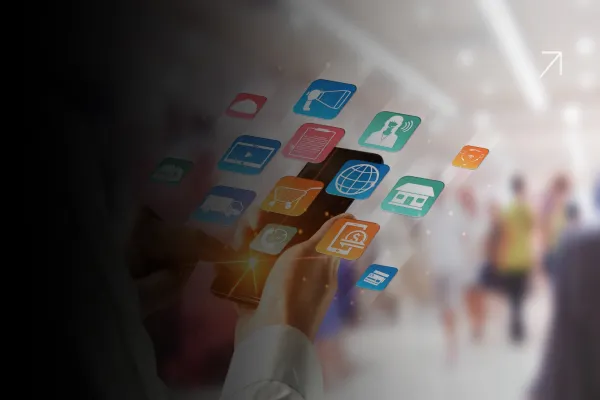Life sciences is in the middle of a technology shift. Traditional R&D models are expensive, slow, and full of risks. Clinical trials stall. Manufacturing costs rise. Patient outcomes don’t always match expectations. To fix this, life sciences leaders are turning to digital twins, which are the virtual replicas of physical systems, products, or even patients that can be simulated, tested, and optimized in real time.
Digital twin technology has already transformed industries like aerospace and automotive. Now it’s reshaping the pharmaceutical and biotech sectors. For CMOs, R&D heads, and digital transformation leaders in life sciences, digital twins are not theory anymore; they’re execution-ready solutions with measurable use cases.
What Is Digital Twin Technology in Life Sciences?
At its core, a digital twin is a virtual model that mirrors a physical object, system, or process. It’s powered by real-time data, simulations, and predictive analytics.
In life sciences, this could mean:
- A digital twin of a patient, used to predict treatment response.
- A digital twin of a manufacturing line, used to improve efficiency.
- A digital twin of a clinical trial, used to forecast outcomes before real patients are involved.
The value lies in speed and accuracy. Instead of relying solely on physical testing, life sciences companies can simulate scenarios, refine them, and only then move to the real world by saving time, cost, and risk.
Use Case One: Digital Twins for Clinical Trials
Clinical trials are the costliest and riskiest stage of drug development. Failure rates are high. Timelines stretch for years. Digital twin technology is beginning to change that.
Simulating patient populations
By creating digital twins of patient cohorts, pharma companies can predict how different groups might respond to therapies. This reduces trial sizes, narrows down inclusion criteria, and improves trial design.
Faster protocol testing
Instead of running endless protocol amendments mid-trial, digital twins allow companies to test different protocols virtually. The result is fewer delays and more efficient use of resources.
Enhancing patient safety
Digital twin models can flag potential safety concerns before they appear in real patients. That makes trials safer, more ethical, and more likely to win regulatory approval.
Use Case Two: Digital Twins for Personalized Medicine
Personalization has long been a buzzword in healthcare. Digital twins are making it real.
Patient-specific simulations
Building a digital twin of an individual patient means by using genomic, lifestyle, and clinical data, researchers can simulate how they might respond to different treatments. This helps doctors choose the best therapy with higher confidence.
Reducing trial-and-error treatments
Personalized digital twins minimize wasted prescriptions and improve adherence. For patients, this means fewer side effects and better outcomes. For pharma companies, it means stronger trust and differentiation.
Scaling personalization
As more patient data becomes available, digital twin technology can create scalable frameworks for personalization by helping entire patient groups benefit, not just individuals.
Use Case Three: Digital Twins in Manufacturing and Supply Chain
Life sciences isn’t only about discovery. It’s also about production at scale. Manufacturing disruptions are costly. Digital twin technology reduces those risks.
Optimizing manufacturing lines
Digital twins of manufacturing plants allow simulation of equipment performance, batch processes, and environmental conditions. Companies can spot inefficiencies before they turn into costly downtime.
Ensuring compliance and quality
In regulated industries like pharma, quality is non-negotiable. Digital twins monitor parameters in real time, ensuring batches meet compliance standards without last-minute surprises.
Supply chain resilience
By modeling supply chain networks as digital twins, pharma companies can simulate disruptions (shortages, delays, regulatory changes) and test contingency plans in advance. That resilience is becoming a competitive edge.
Use Case Four: Digital Twins for Drug Discovery
Drug discovery has always been a resource-heavy process. Digital twin technology helps accelerate it.
Virtual testing of molecules
Digital twins of molecules can be tested against virtual models of diseases, predicting how compounds will behave before moving into costly wet-lab experiments.
Reducing R&D costs
By eliminating weak candidates earlier, companies save millions. They can focus on molecules with the highest probability of success in real-world settings.
Accelerating time-to-market
The faster promising compounds move through discovery, the sooner they enter clinical trials. That compression of timelines is critical in a market where speed equals competitive advantage.
Use Case Five: Digital Twins for Patient Engagement and Education
It’s not just R&D or manufacturing. Digital twins can improve how healthcare providers engage with patients.
Visualizing treatment outcomes
Patients can see a simulation of how a therapy might affect their body. This makes complex science understandable and increases patient trust.
Supporting healthcare professionals
Doctors using digital twin simulations can explain treatment options more clearly, improving decision-making and adherence.
Enhancing healthcare marketing
CMOs in life sciences can use digital twins as part of healthcare content marketing, thus showing real-world impact through virtual models. This builds credibility with both healthcare professionals and patients.
Challenges in Adopting Digital Twin Technology
Digital twins aren’t plug-and-play. There are real barriers.
Data availability and quality
Digital twins rely on accurate, high-volume data. In life sciences, much of this data is siloed or incomplete. Without integration, models lack reliability.
Regulatory uncertainty
While regulators see promise in digital twin technology, frameworks for validation and approval are still evolving. Life sciences leaders must stay proactive in shaping these guidelines.
Cost and talent requirements
Building and maintaining digital twins requires investment in infrastructure and specialized skills. Companies must balance early adoption with long-term scalability.
Conclusion
Digital twin technology is no longer futuristic. It’s already reshaping the pharmaceutical and life sciences ecosystem, from clinical trials to manufacturing, from drug discovery to patient engagement.
The companies that adopt digital twins now will move faster, spend smarter, and build more resilient operations. Those that wait will spend the next decade reacting to competitors who are already simulating the future today.
Your Next Step with Digital Twins in Life Sciences
Digital twins aren’t experiments anymore. They’re proven use cases waiting to be scaled. For life sciences CMOs, R&D heads, and digital leaders, the time to explore and adopt digital twin technology is now. The next wave of innovation in clinical trials, personalized medicine, and manufacturing is already being built virtually.





